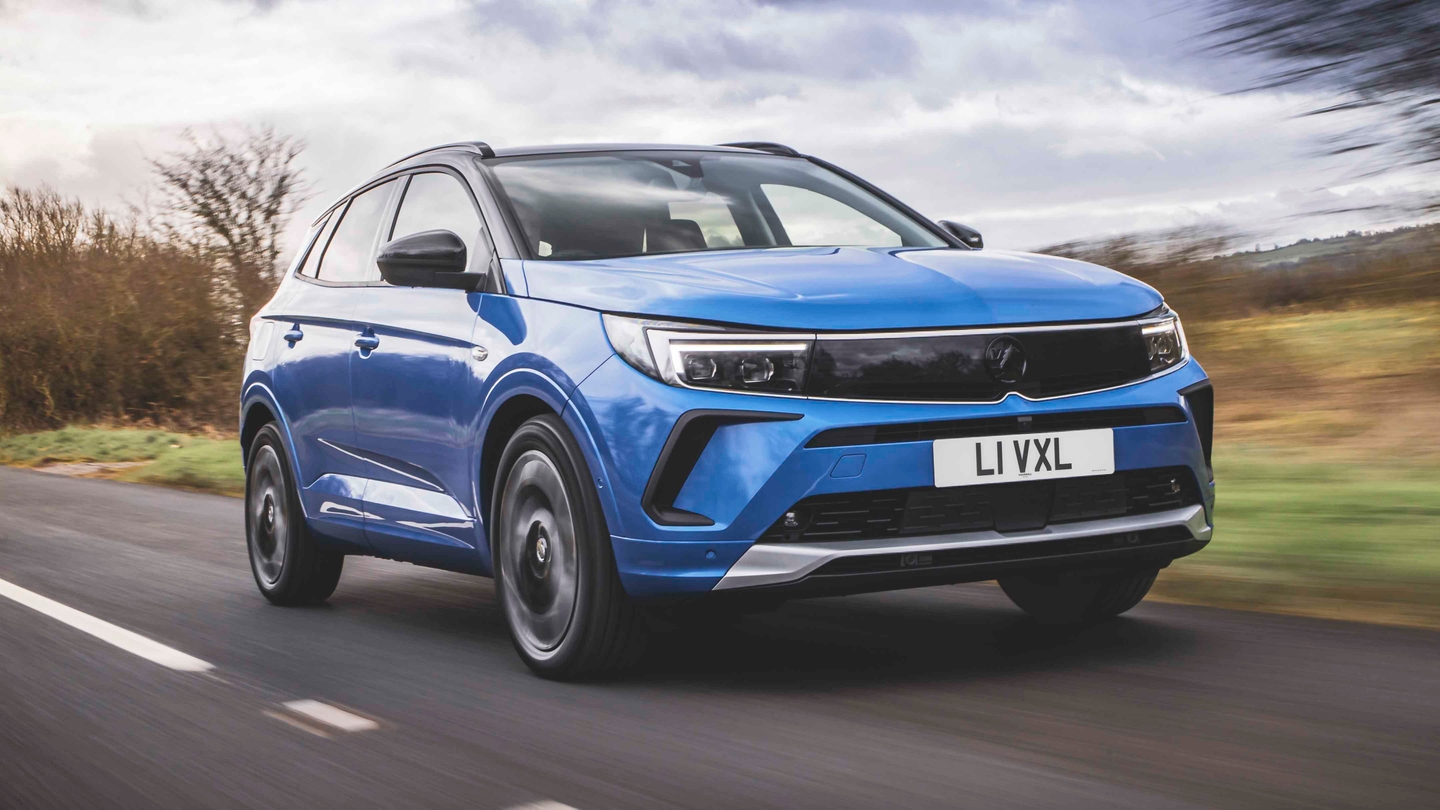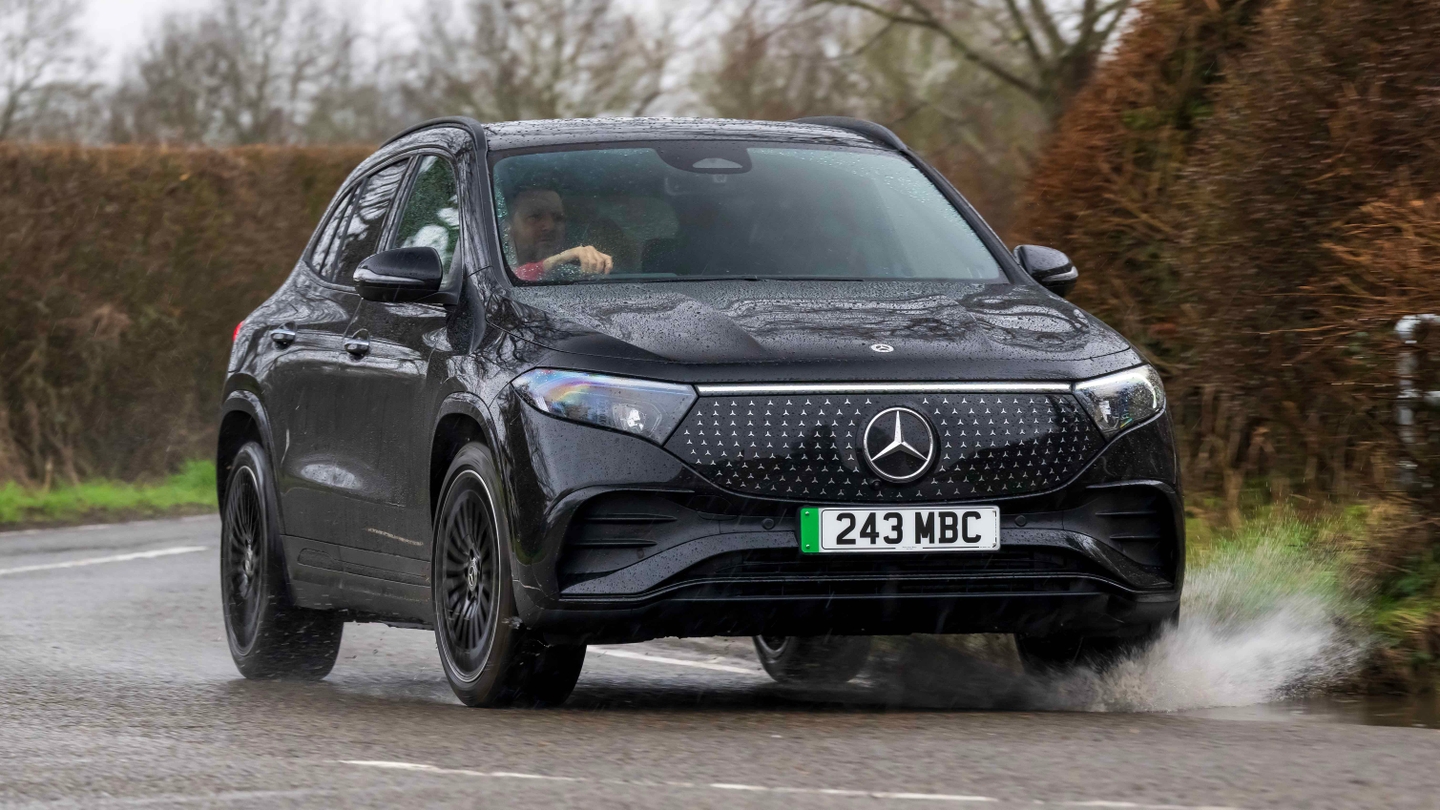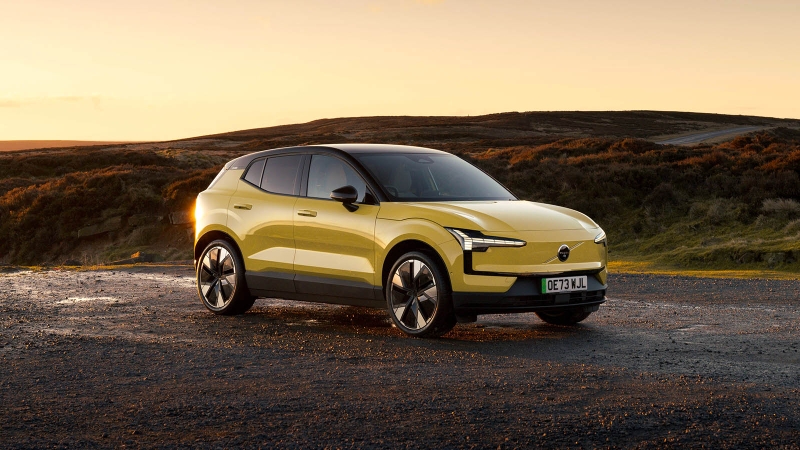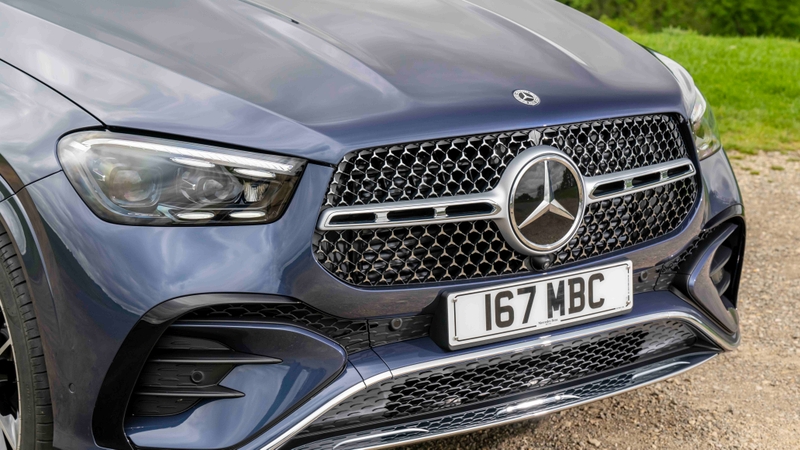

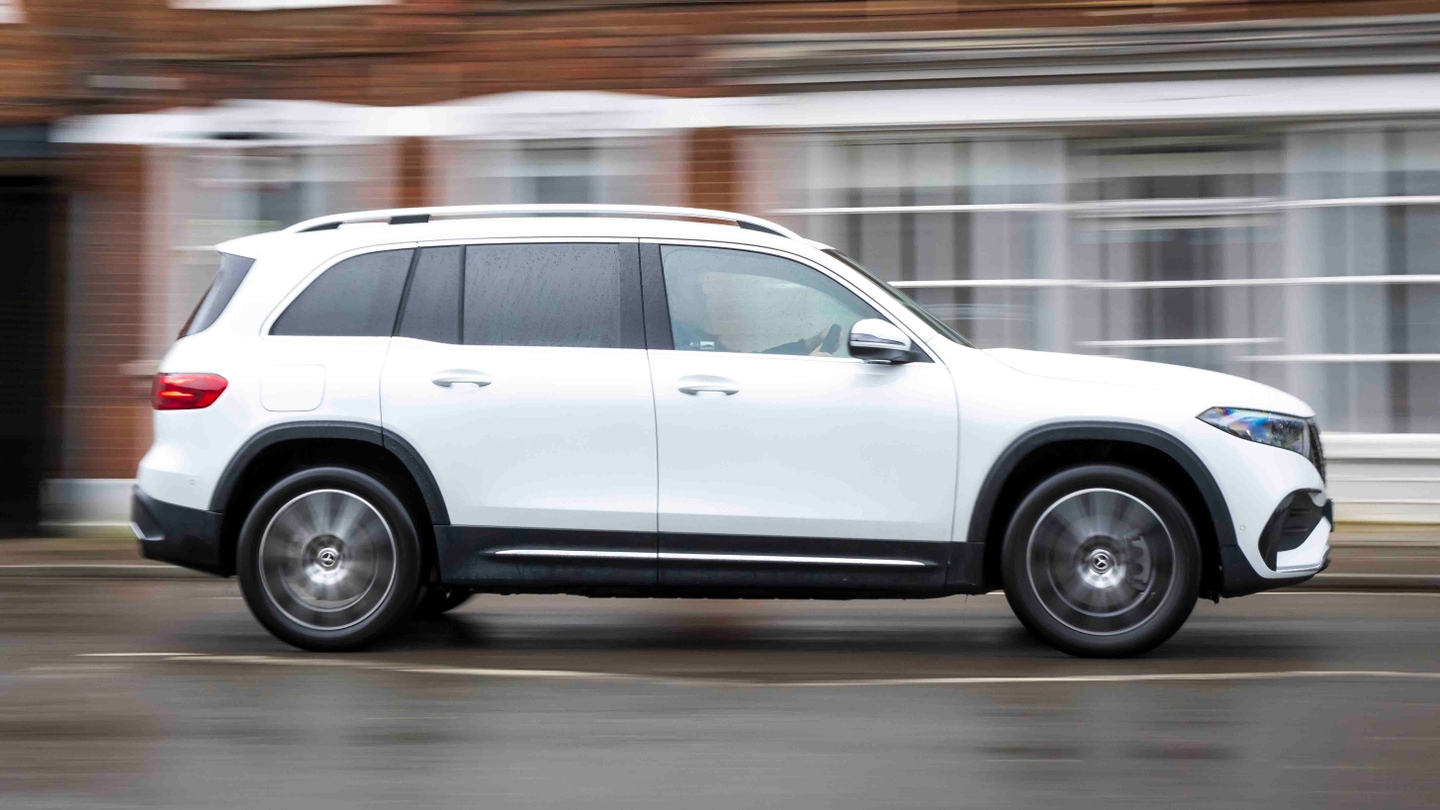
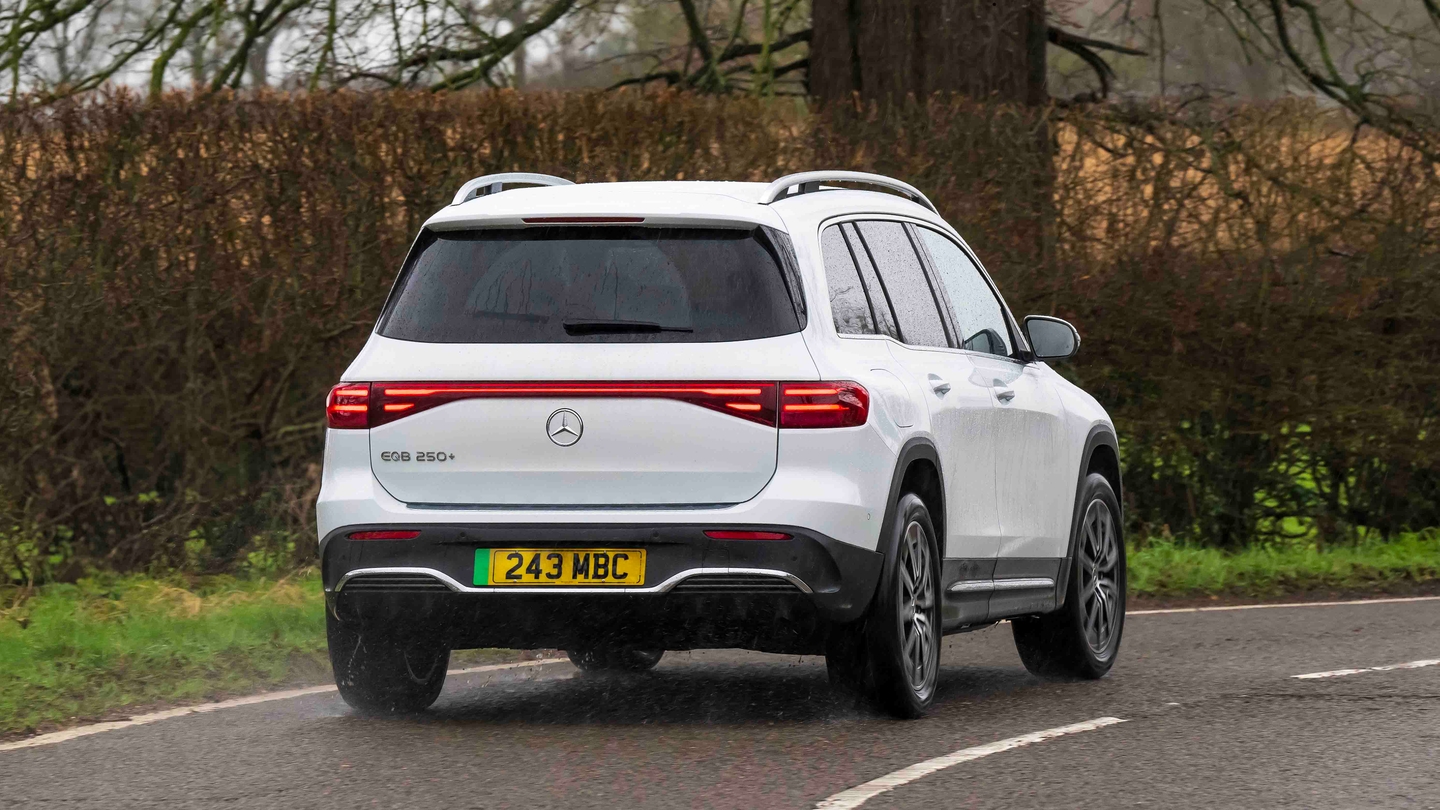
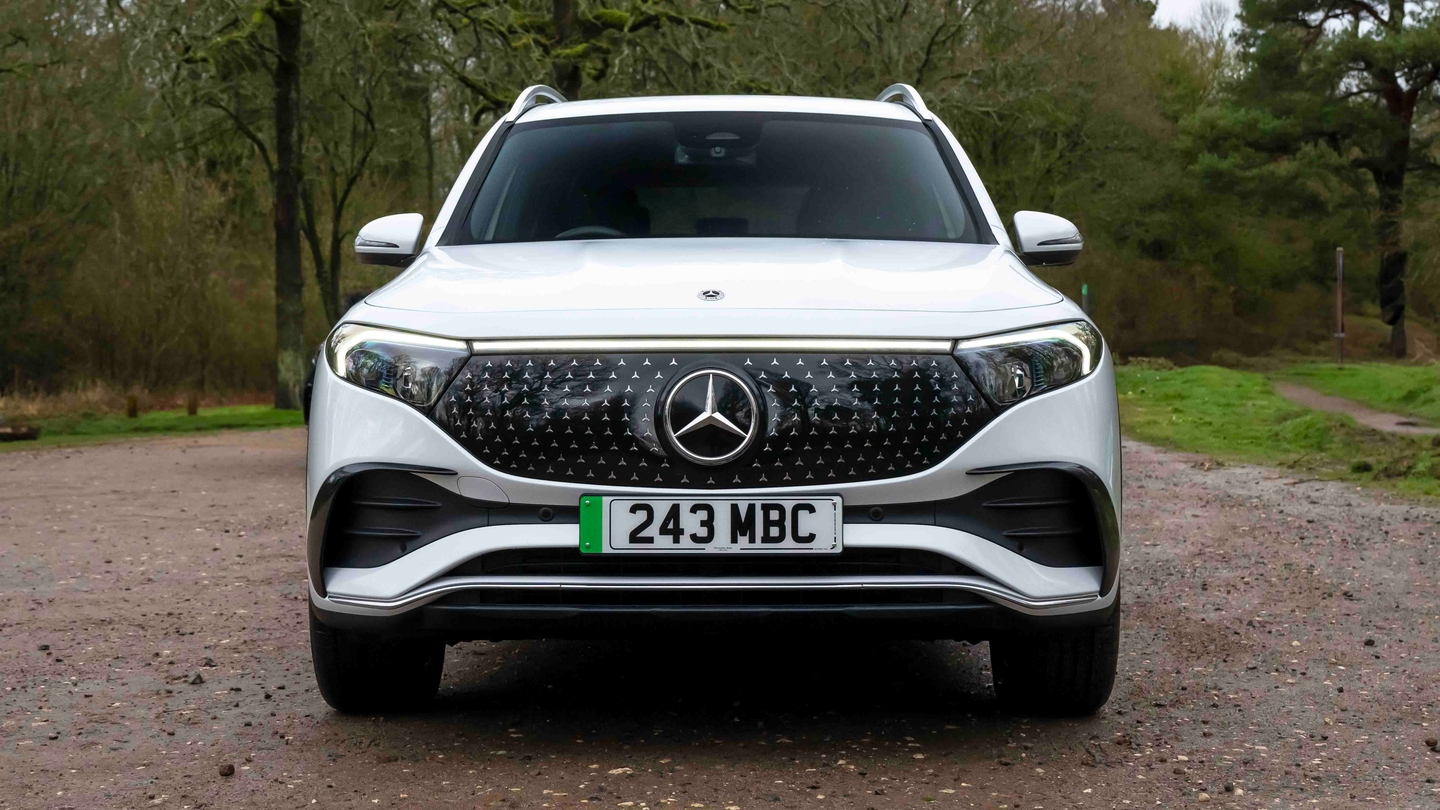
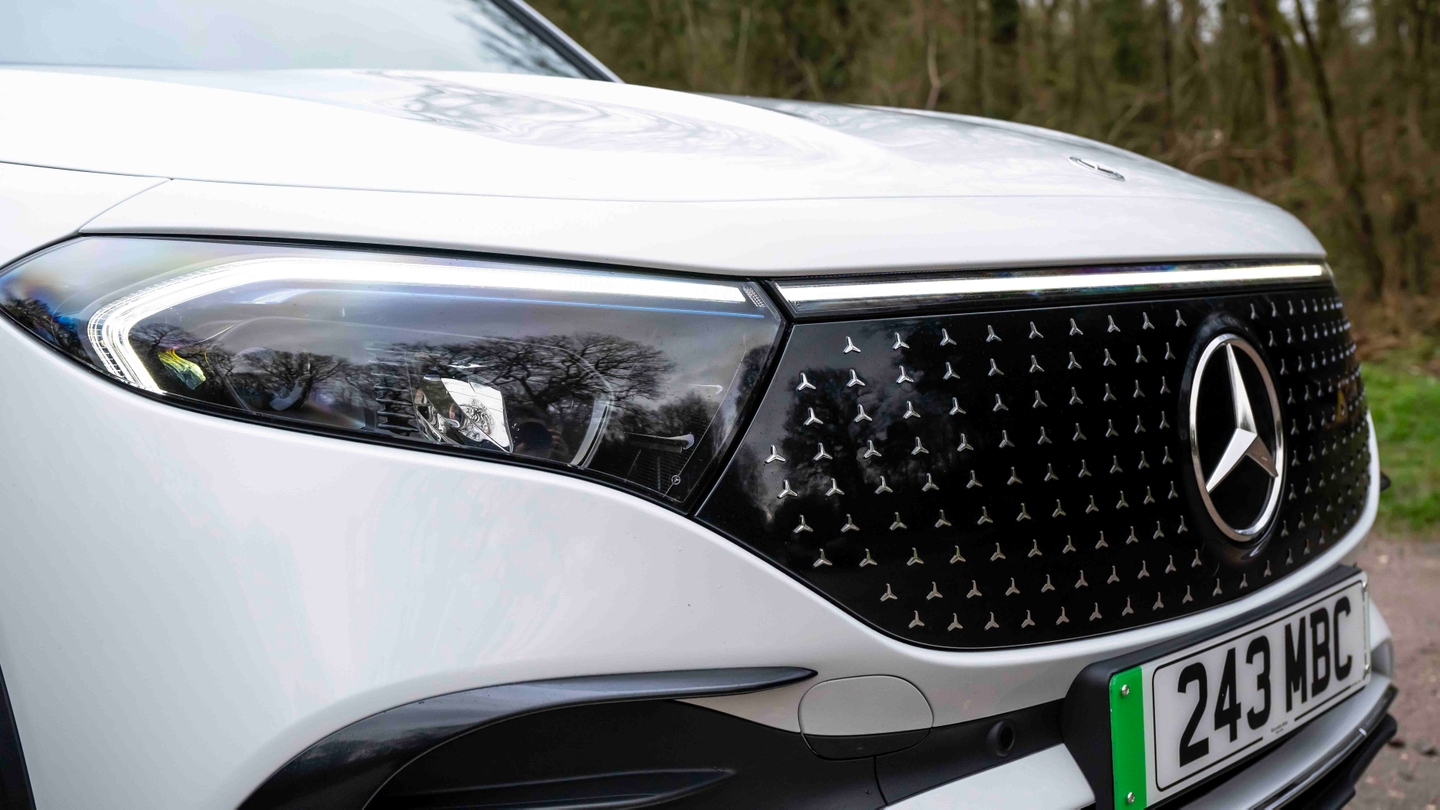
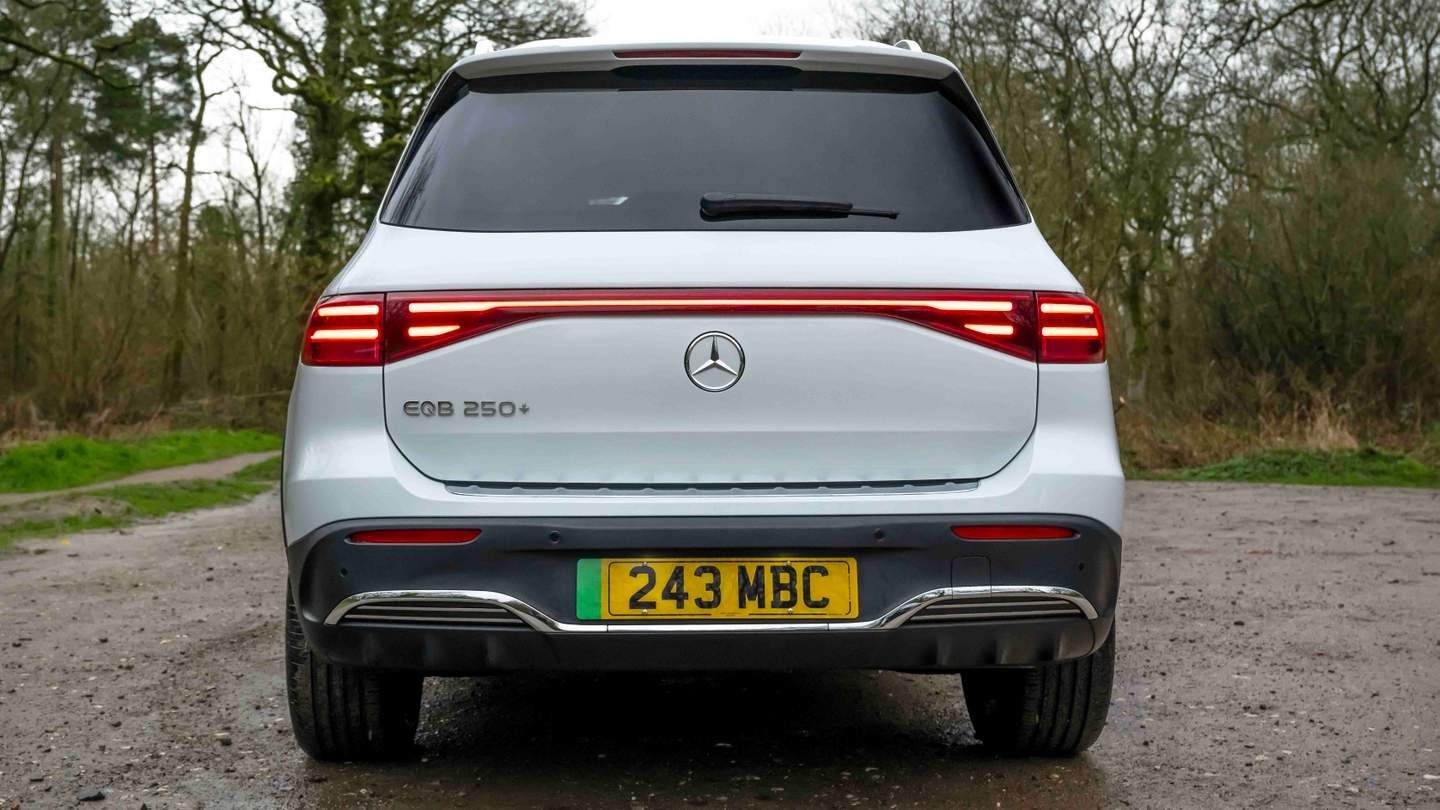
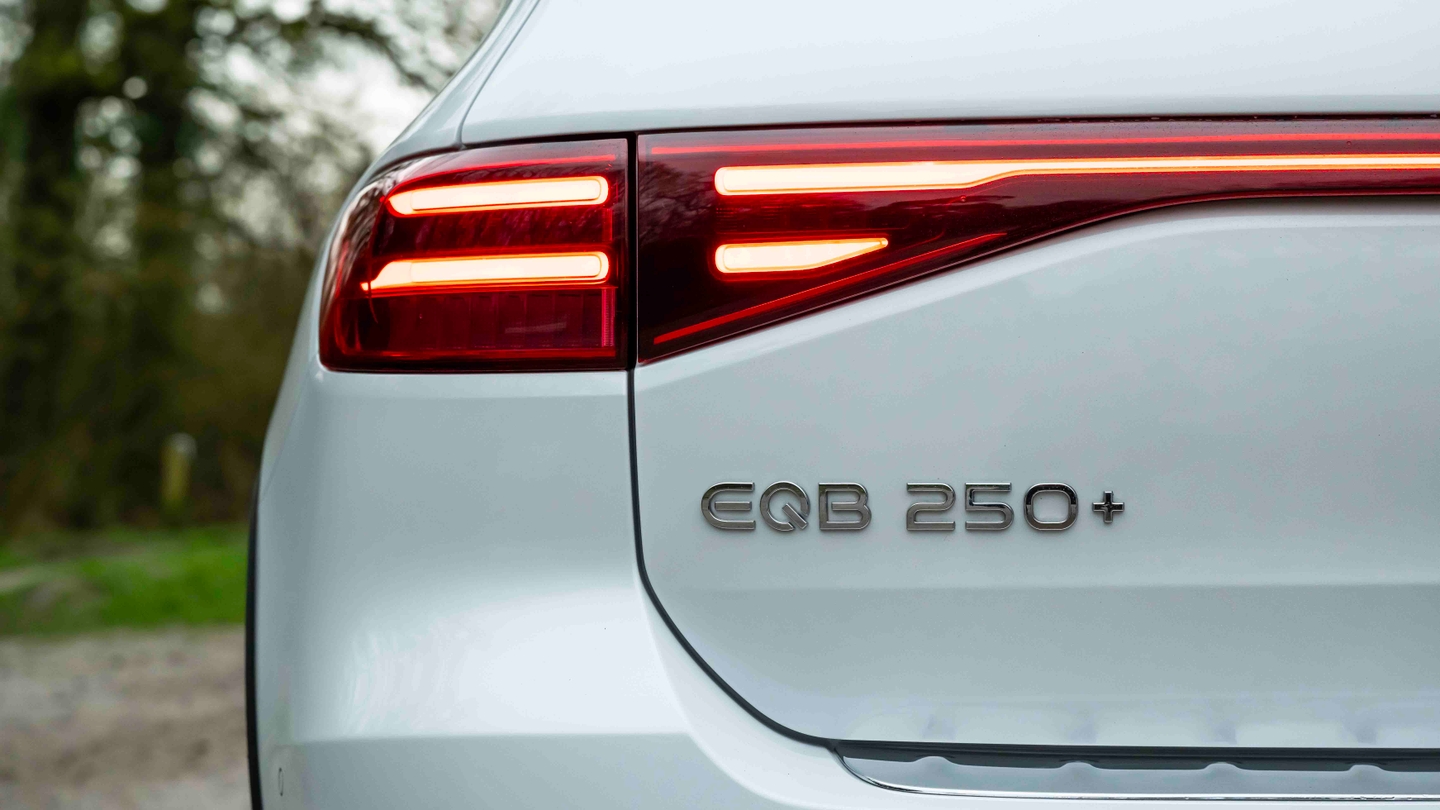
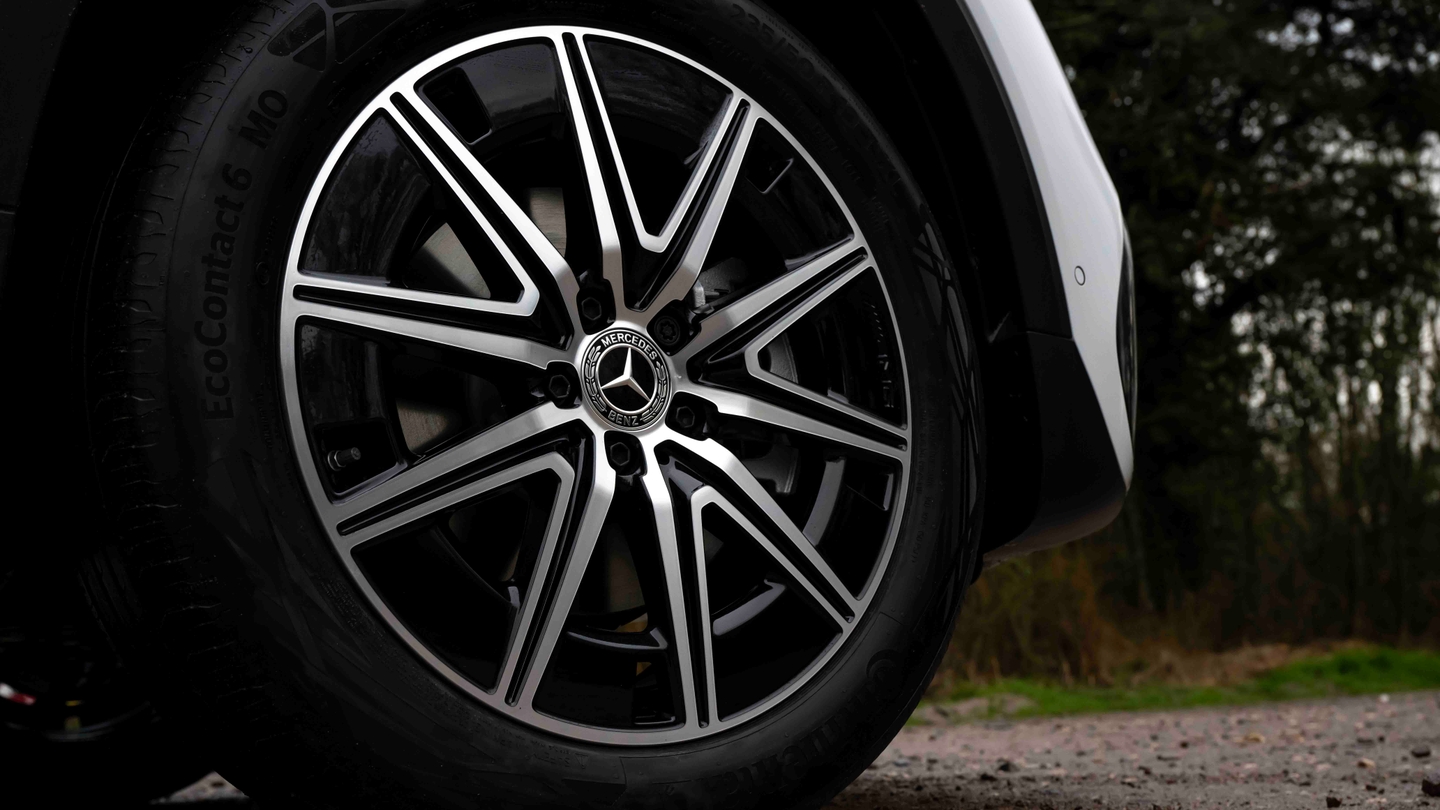
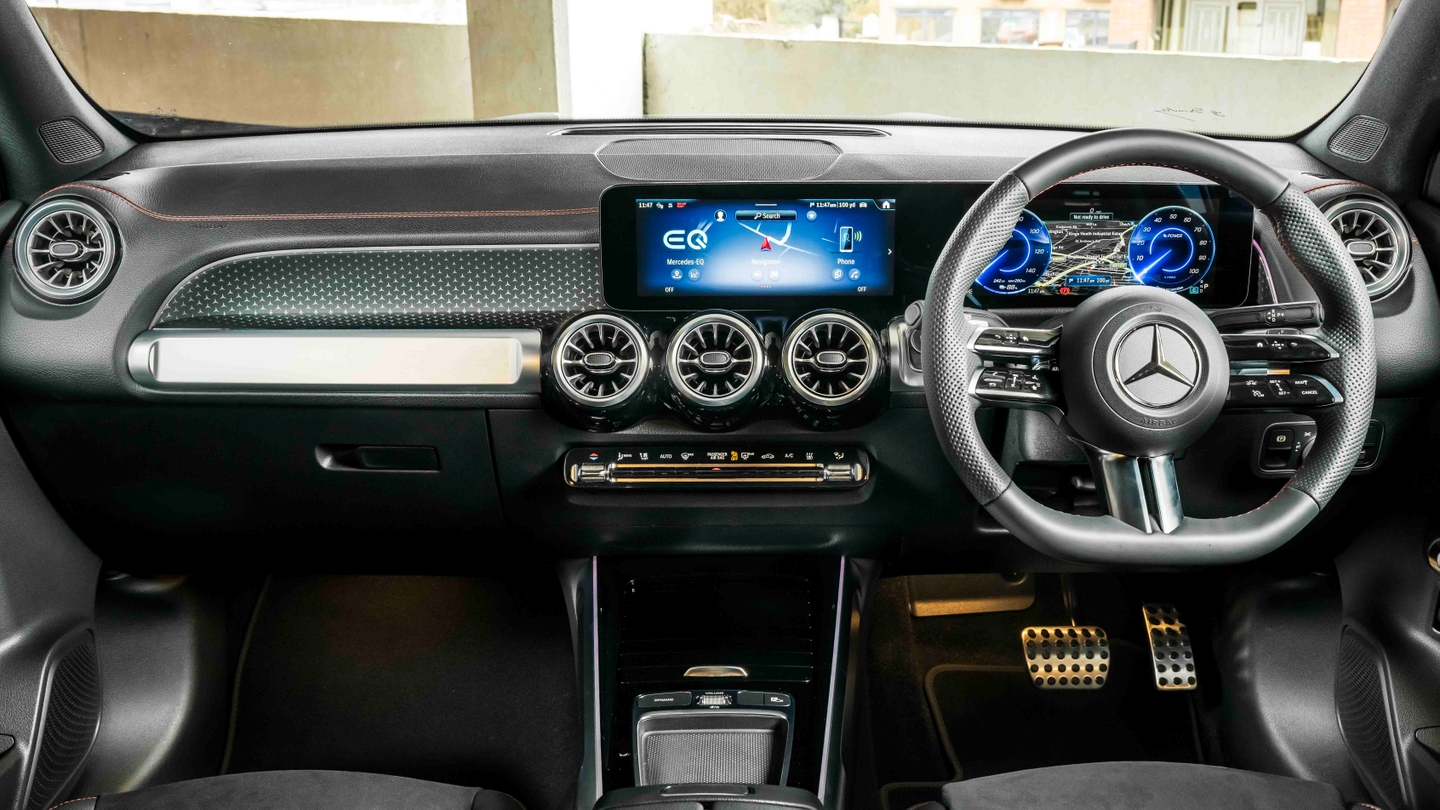
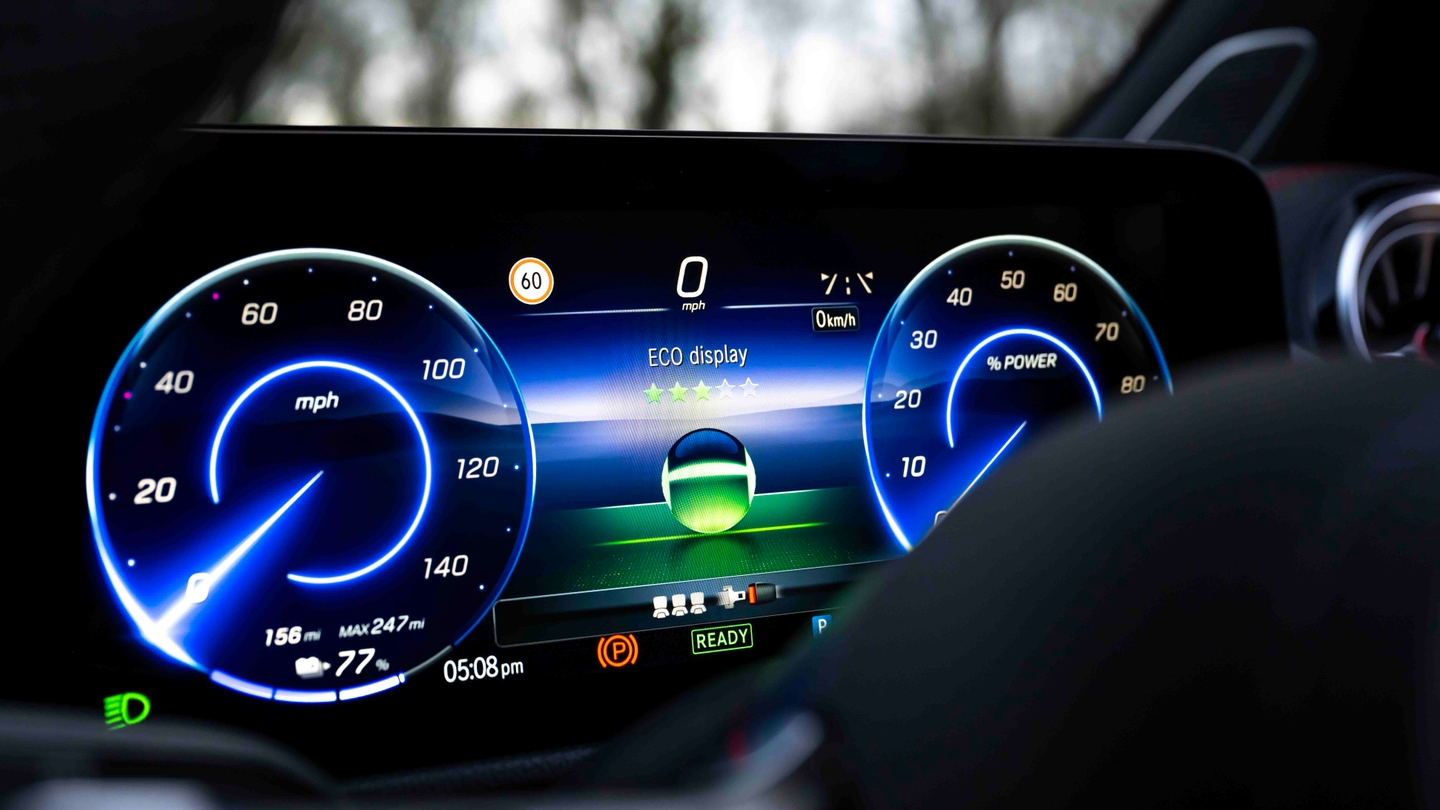
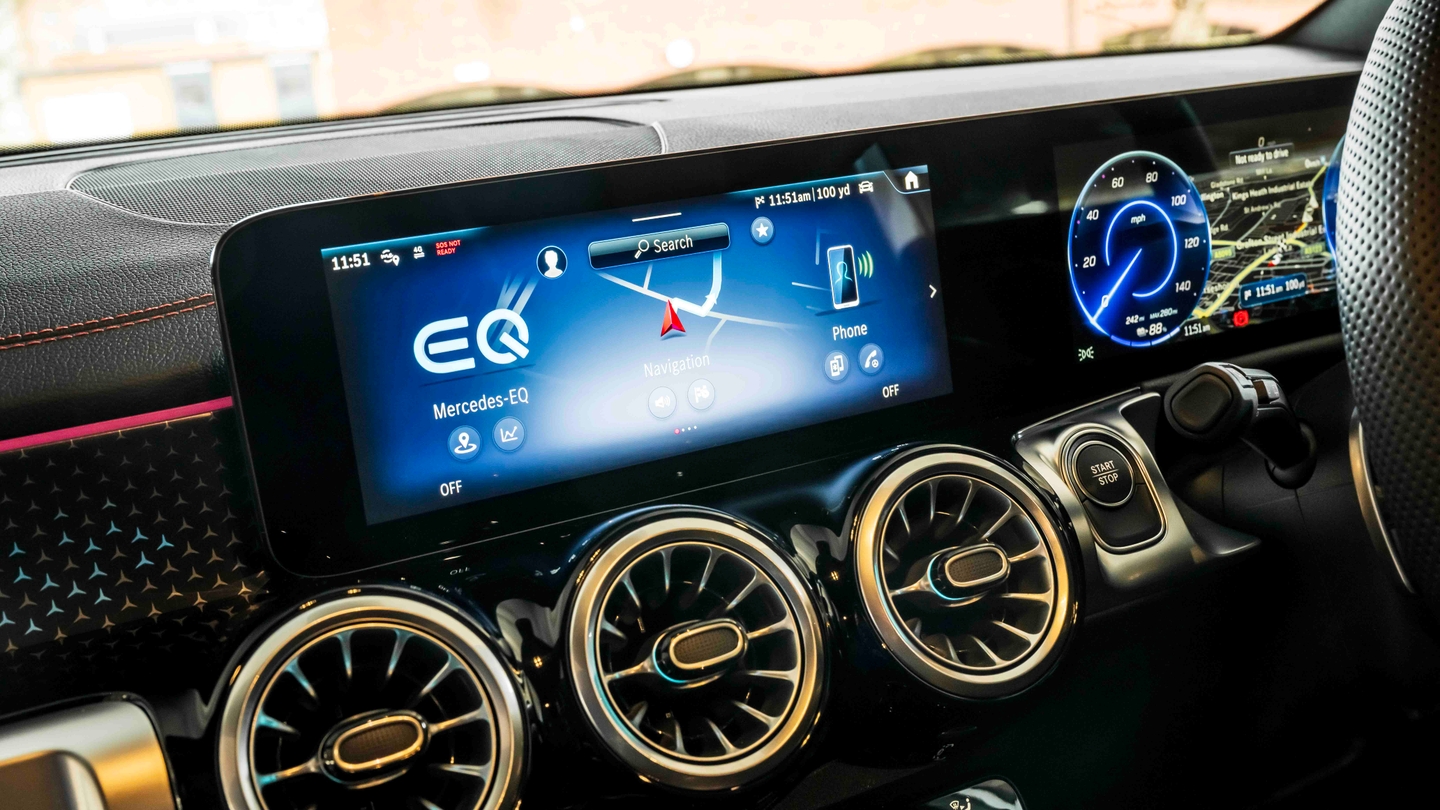
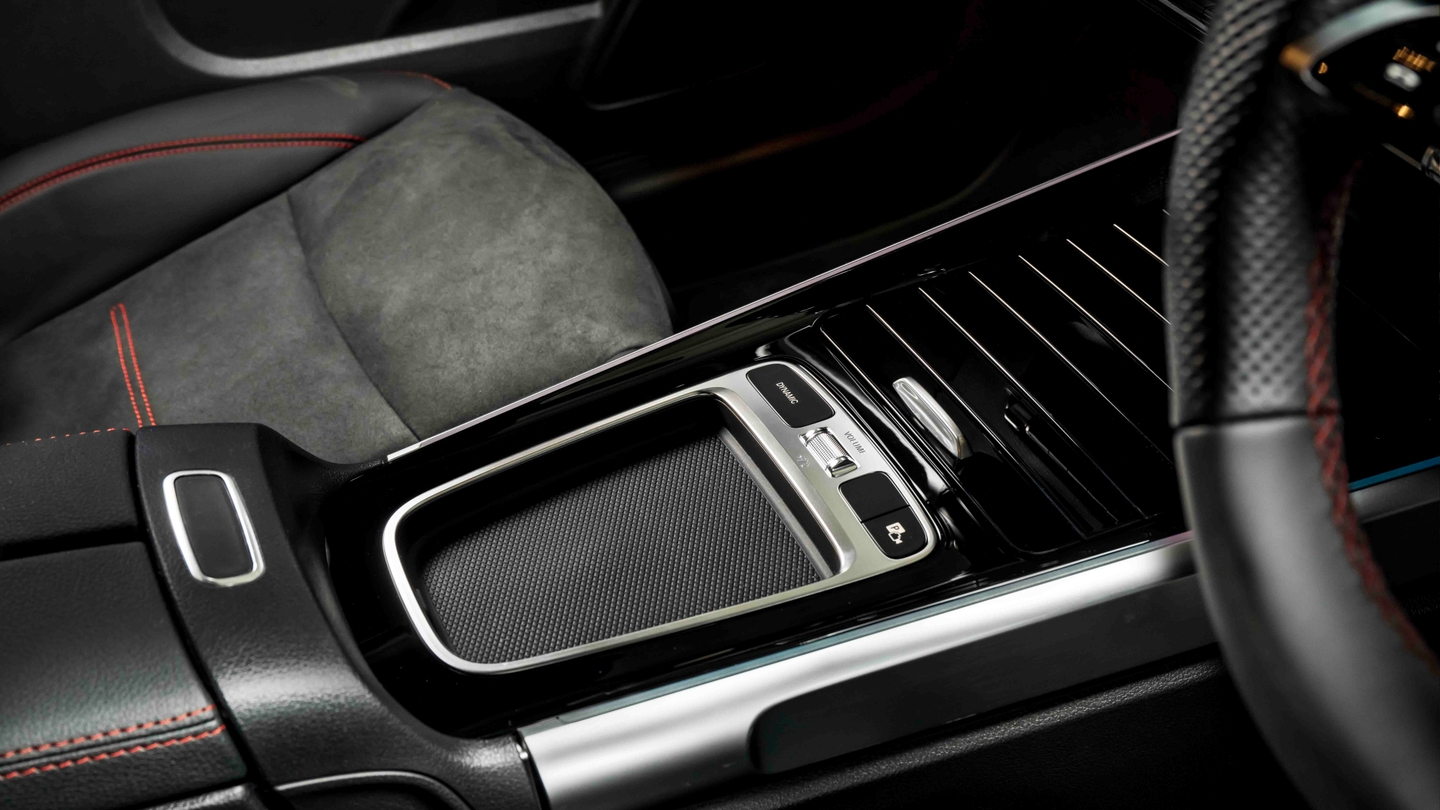

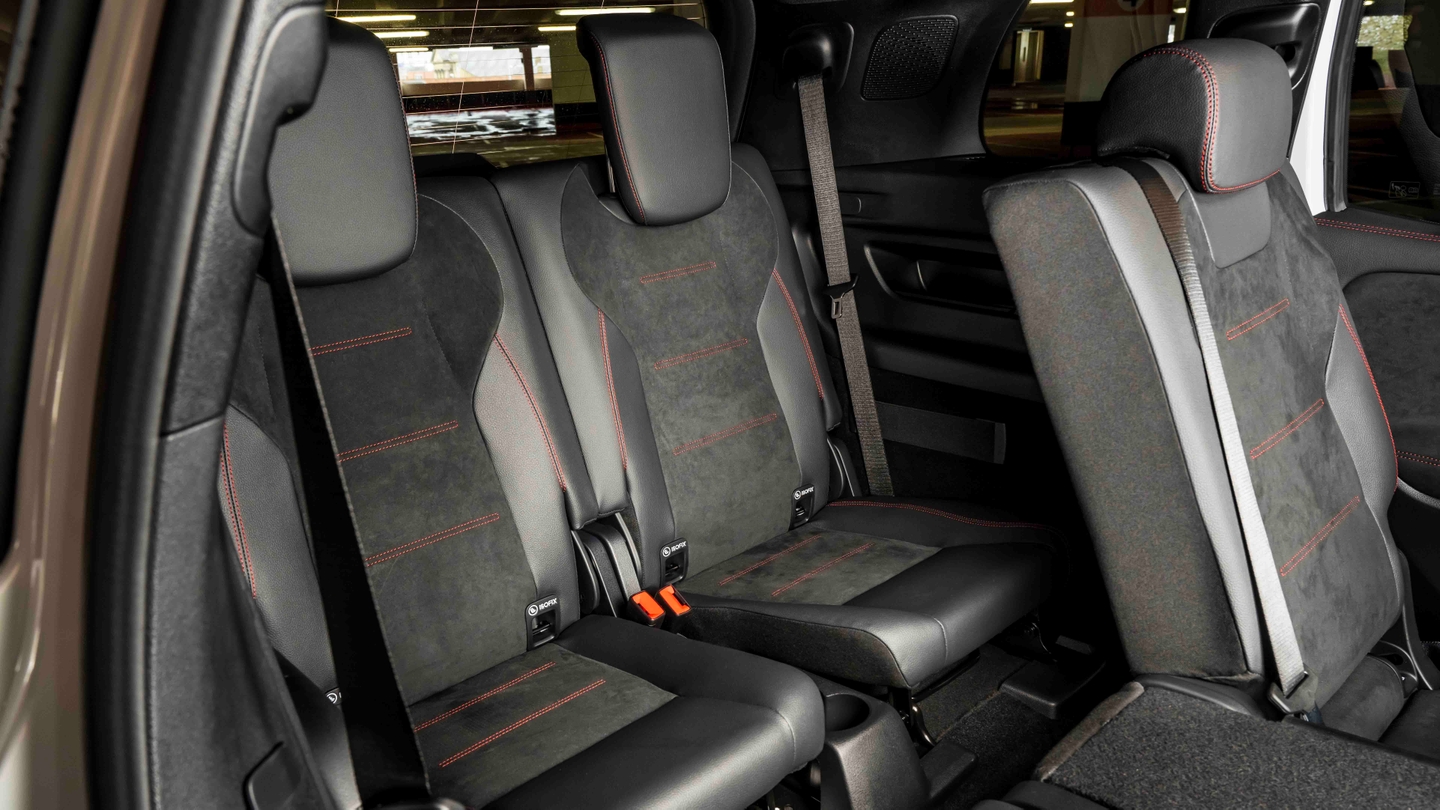
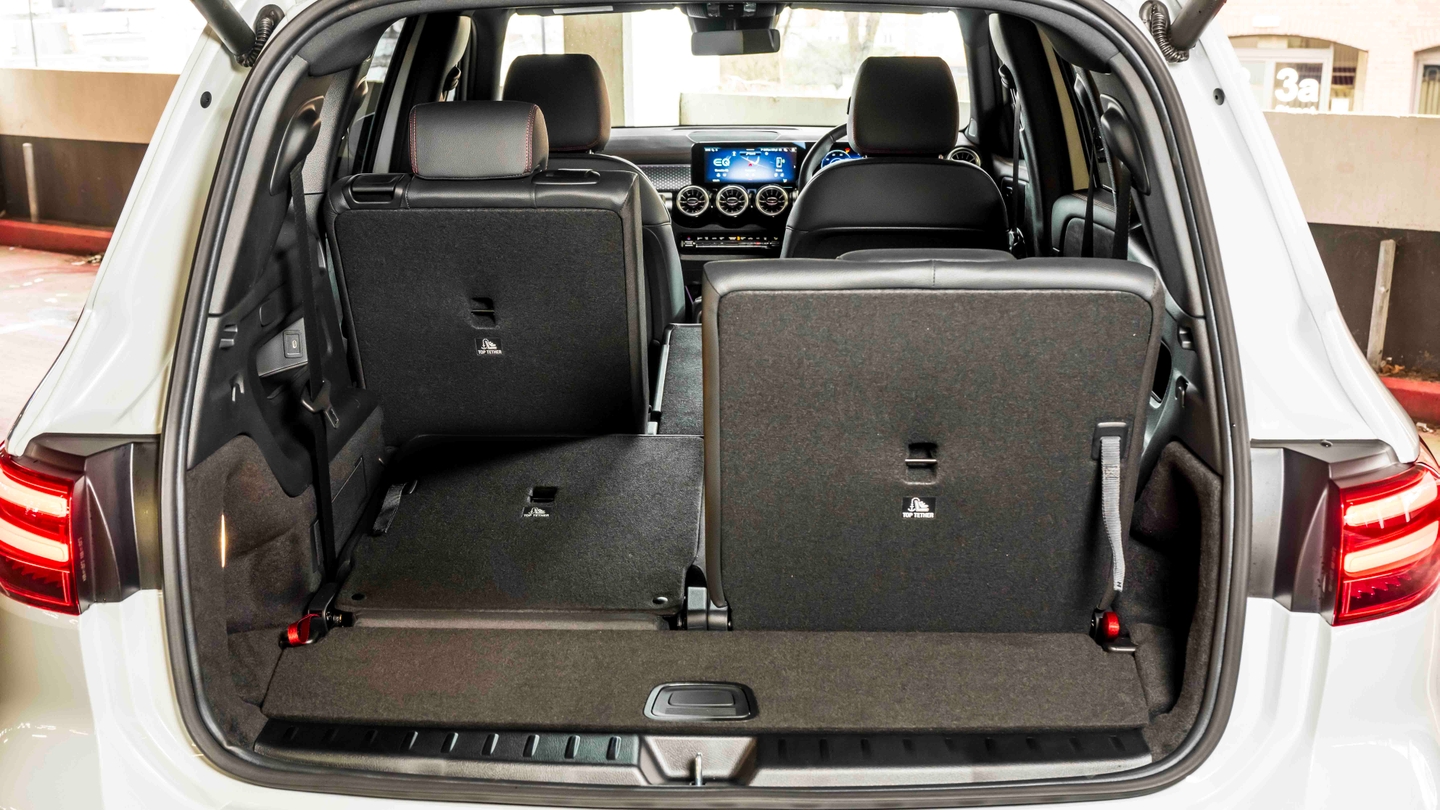
Mercedes EQB Review

There are several seven-seat EVs now, but most of your choices are either van-based MPVs or very expensive.
Somewhere in the middle of those is the Mercedes EQB, which combines boxy space with a super-smooth electric powertrain. Is it the best of Mercedes’ range?
- Comfortable and relaxed
- Space in the back row for adults
- Plush-looking interior
- Very difficult to access third row
- Feels heavy
- Tiny boot with seats up
Should I buy a Mercedes EQB?
Squeezing seven seats into less than 4.7 metres of car is tricky, so the Mercedes EQB is a little bit compromised by its nature. You’ll probably need to have the reflexes of an Olympic gymnast to get into the third row and, when those seats are up, there’s only enough boot space for a couple of guinea pigs.
However, if you’re more of an optimist, then the EQB makes some sense. It’s much more versatile than the EQA, with five spacious seats and a couple of extra seats for occasional use, and a practical boot with the rearmost seats folded.

Add in some powerful electric powertrains and a maximum range of 321 miles, and the EQB has plenty to offer as a family car with zero exhaust emissions.
All its qualities don’t come cheap, though. While the EQB isn’t as expensive as something like a Kia EV9 or Volvo EX90, it still starts at over £50,000 for a new one. That means its closest rival is actually the Peugeot e-5008, which is bigger, newer-feeling, cheaper to insure and not a million percent less premium than the Mercedes. On the flip side, the Mercedes should keep its value better, and you get the premium badge.
Interior and technology

Being indirectly based on the Mercedes A-Class, the EQB inherits that car’s fancy interior. Highlights include a 64-colour ambient lighting package, a set of circular air vents and the twin 10-inch screens ahead of the driver – one that’s a touchscreen and one that replaces a traditional gauge cluster. The two big screens are standard – there’s no smaller screen offered here, like there was in the A-Class.
First impressions are excellent. Most cars get sports seats upholstered in microfibre suede and Mercedes’ man-made leather, as well as open-pore wood trim and cool metallics.
Mercedes obviously presumes that you won’t poke at the dashboard and door cards too closely, but we did and there are a few areas that don’t feel quite as solid and premium as you’d hope. What’s more, the textured wood trim was removed from entry-level EQBs in the car’s 2024 facelift, and replaced with cheaper-feeling gloss black plastic with hundreds of tiny backlit Mercedes star logos.

The screens look a bit overwhelming at first, but live with them for a bit and you’ll find them fairly easy to use. Even with the oversensitive touch panels on the steering wheel to control the scroll, you’ll soon be whizzing from one menu to the next. And Mercedes hasn’t forgotten to programme the steering wheel buttons for right-hand-drive cars, so the left bank of buttons controls the left screen and the right bank of buttons controls the right screen. Sounds simple, but a lot of cars don’t do that.
Over time, the EQB’s trim level names have changed slightly, but all cars include an electric bootlid, LED lights, a reversing camera, lane-keep assist and blind-spot monitoring, Apple CarPlay and Android Auto, and a vehicle protection system that uses the car’s network of cameras and sensors to record its surroundings.
Mid-spec AMG Line Premium adds bigger wheels, an upgraded sound system, keyless entry and wireless phone charging, while high-end AMG Line Premium Plus has an equipment list as long as its name, including a Burmester sound system and a panoramic sunroof.
Practicality

Every EQB is a seven-seater, with a pair of flip up seats in the boot. You probably won’t want to use these seats all the time – if you do, a van-based MPV like the Mercedes EQV or Citroen Berlingo will be better. But as a five-seater with two additional seats for short trips or the odd time when you’ve got the family around, it works quite well.
We tested the rear-seat space so you don’t have to… you’re welcome. The impressive thing is that three average-sized adults can sit one behind another, because there’s room for adults in the third row as long as the second row is pushed forward a fair bit. In this configuration, everyone gets just enough legroom but there’s none spare. Long journeys with more than four adults on board are likely to feel claustrophobic.
It’s also a big plus point that there are Isofix points in the third row, so it’s easy to install child seats back there. A big boon for the school run carshare, for sure.

But actually getting to the third row is like trying to thread an elephant through a needle. The sill is high, the roof seems low and the second row seats don’t fold forward anywhere near enough to make it easy. Graceful, it certainly won’t be. And, when you need to get out, it’s equally tricky and awkward.
You’ll probably find yourself constantly flipping seats down, moving them forwards and backwards, and putting child seats in and out – which means the EQB might be a little annoying to live with, even if its versatility and flexibility appeals.

Treated as a five-seater, the EQB really embarrasses the smaller EQA. The latter has a tiddly 340-litre boot, but the EQB offers 495 litres of boxy usefulness. That extends to a huge 1,710 litres with the second row folded, if you don’t mind loading to the roof.
A minor annoyance is that, when you need to put the rear seats up, there’s nowhere to stash the parcel shelf. Or the charging cable, actually. So the resulting 130-litre boot space is fully taken up with those two things. That’s another reason why you wouldn’t want to use the EQB as a seven-seater on a daily basis.
Range and performance
There are three main EQB versions – 250, 300 and 350. With a 66.5kWh battery, these all manage 250 miles or thereabouts. Newer 250+ cars get a 70.5kWh battery for a handy increase to around 300 miles (up to 321 miles for the entry-level Sport trim). It’s a bit odd that the more powerful versions stick with the smaller battery – you’re spending more but still probably getting 200 miles of real-world range.

A 100kW public charger will have you back at 80% (from 10%) in 32 minutes, while a home wallbox will do 10-100% in 10-11 hours.
The entry-level 250 is single-motor two-wheel drive, while the 300 and 350 use dual motors for four-wheel drive. The motors are slightly different, too, because the 250 produces 190hp and the 300 boosts that to 225hp. Off the line, the 300 is slightly quicker, taking around eight seconds to complete the 0-62mph sprint, compared to nine seconds for the 250. Both are perfectly nippy enough for daily driving.
Range-topping 350 versions are the closest you’ll get to an AMG-tuned EQB. These have 292hp and a speedy 0-62mph time of just six seconds. The excess of power is really nice for those moments when you need instant pace, and it pins you back in your seat, but flex the accelerator too hard and your passengers might be reaching for a sick bag.
Driving and comfort

Despite our 350 test car having sports-car pace, the EQB is best driven in a more relaxed manner. The powertrain is impeccably quiet, and refinement at any speed is very good. Most of the time, it soaks up bumps very well – you’ll hear suspension impacts but you’ll barely feel potholes and jolts.
On the motorway it can feel a little bit jiggly and unsettled, and you become aware that it’s trying to mask its hefty 2.1-tonne kerbweight. On twistier roads, that manifests itself as inevitable body roll, so stick it back into comfort mode and enjoy the smoothness.
As you might expect, the steering is fairly light and pretty uncommunicative, but it does feel accurate and direct.




